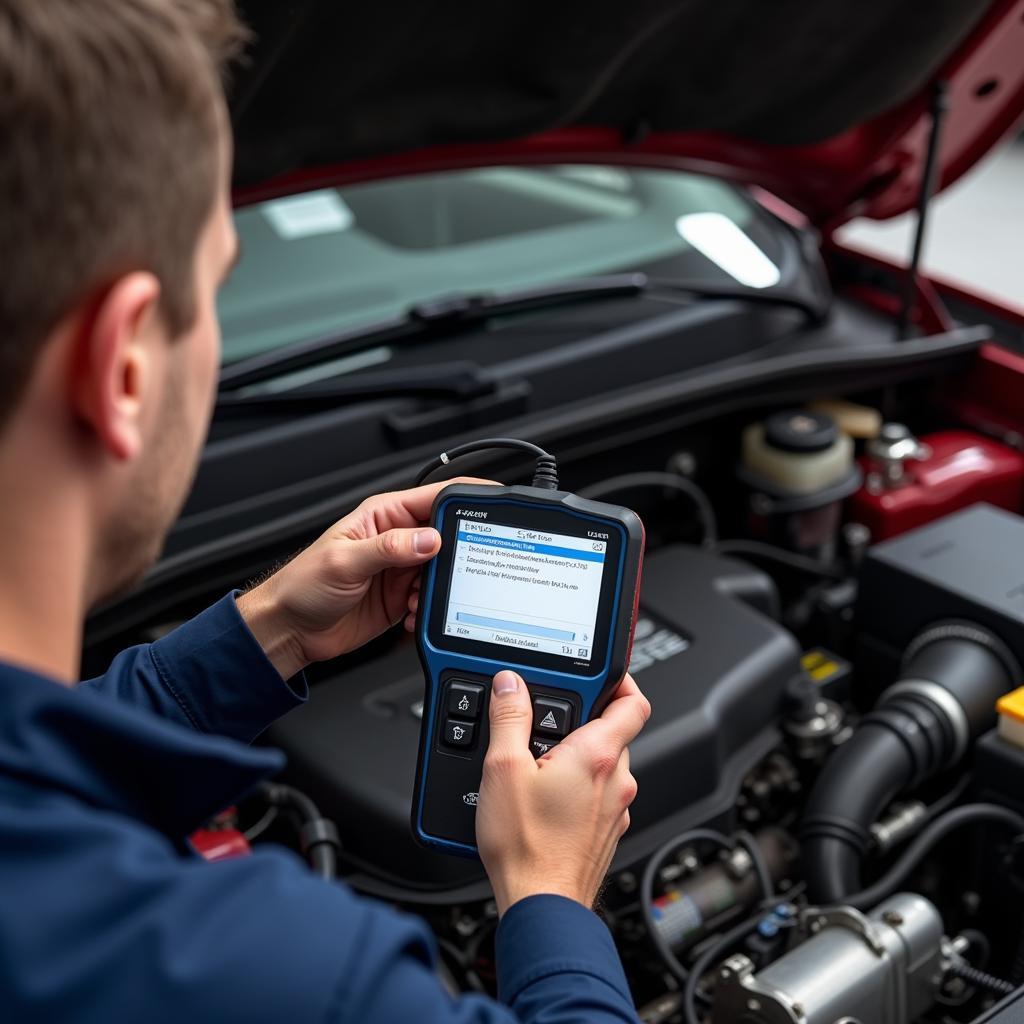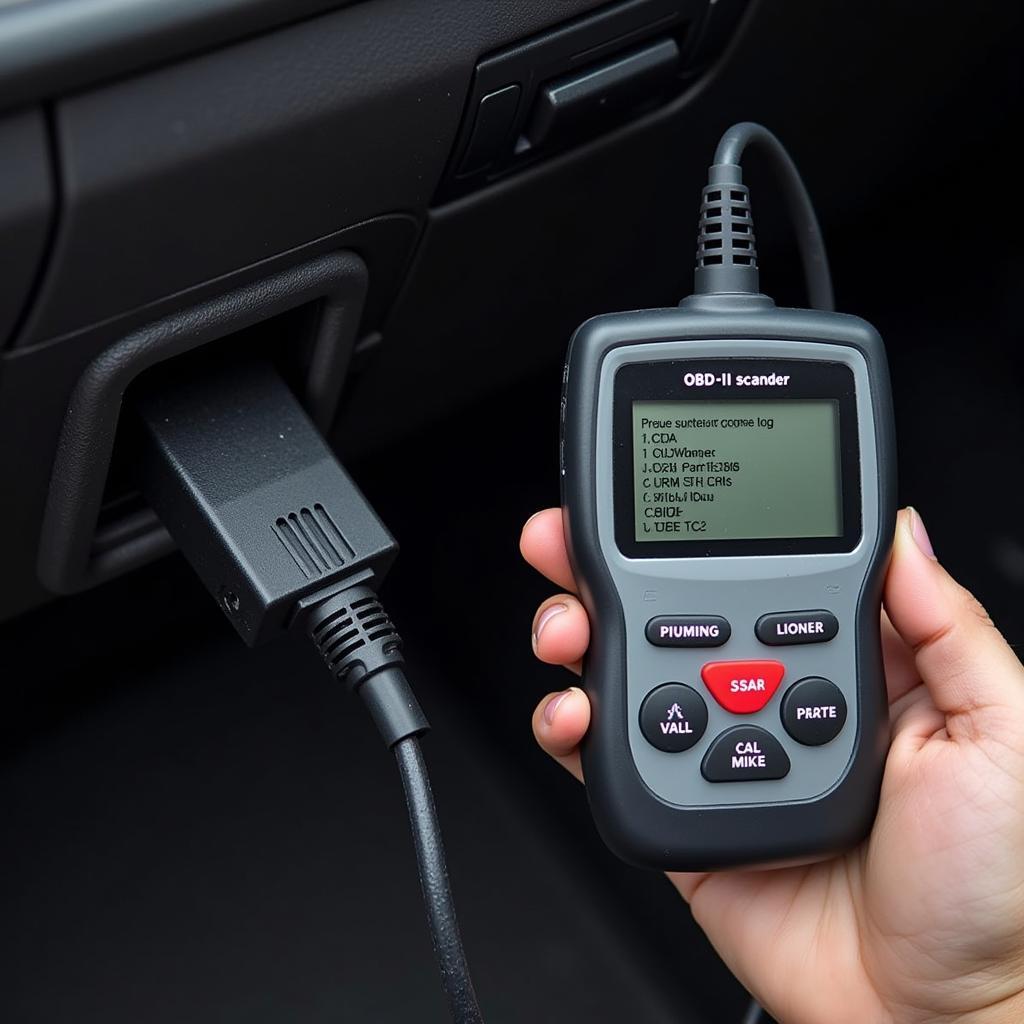If you’ve recently had your car checked for a pesky check engine light or a more serious mechanical issue, you might be wondering, “How Long Does A Diagnostic Record Stay In A Car?”. This is a common question among car owners, and understanding the answer can be helpful for various reasons, from selling your vehicle to simply understanding how your car’s computer system works.
Diagnostic trouble codes, or DTCs, are stored in your car’s onboard computer, also known as the Engine Control Unit (ECU). These codes are triggered when a sensor in your vehicle detects a condition outside the normal operating range.
 Car ECU and Diagnostic Records
Car ECU and Diagnostic Records
Different Types of Diagnostic Records
There are different types of diagnostic records, each with its lifespan:
- Permanent Codes: These codes indicate a serious issue that has been addressed but requires confirmation that the repair was successful. Permanent codes can stay in your car’s memory indefinitely or until they are manually cleared using a diagnostic scanner.
- Pending Codes: These codes are triggered when an issue occurs intermittently. They turn into permanent codes if the problem happens a certain number of times in a row.
- Historical Codes: These are past codes that have been resolved and are kept in the system for future reference. The length of time these codes stay stored varies between car manufacturers and models.
Factors Affecting How Long Diagnostic Records Stay
Several factors influence how long a diagnostic record remains in your car:
- Vehicle Make and Model: Each manufacturer designs its ECUs differently, leading to variations in how long they store diagnostic information.
- Battery Disconnection: Disconnecting your car battery for a period can sometimes clear the diagnostic records. However, this is not always guaranteed, and some codes may remain stored.
- Code Clearing: A mechanic or someone with a diagnostic scanner can manually clear the diagnostic codes from your car’s system.
 Clearing Diagnostic Codes
Clearing Diagnostic Codes
Why Knowing Diagnostic Record Duration Matters
Understanding how long diagnostic records stay in your car can be important for several reasons:
- Selling Your Car: Potential buyers often use diagnostic scans to assess a vehicle’s history. Clearing old, irrelevant codes before selling can prevent unnecessary concern.
- Troubleshooting: Mechanics use the information stored in diagnostic codes to understand your car’s past issues and diagnose current problems more effectively.
- Monitoring Vehicle Health: Being aware of the codes stored in your car’s ECU allows you to stay informed about potential problems and address them proactively.
How to Check and Clear Diagnostic Records
While you can disconnect your battery to potentially clear some codes, the most reliable way to check and clear diagnostic records is by using an OBD-II scanner. You can find these scanners at most auto parts stores, or you can take your car to a mechanic for a professional diagnosis.
how to do a diagnostic test on a car
FAQs
Q: Will driving my car erase diagnostic codes?
A: Driving your car might clear some pending codes if the issue doesn’t reoccur. However, permanent and historical codes usually require manual clearing.
Q: Can I access my car’s diagnostic records without a scanner?
A: Some newer cars might display certain codes on the dashboard. However, for a complete view, you’ll generally need an OBD-II scanner.
 OBD-II Scanner for Diagnostic Codes
OBD-II Scanner for Diagnostic Codes
Need More Help with Diagnostic Codes?
Understanding your car’s diagnostic system can seem complicated, but it’s crucial for maintaining your vehicle and making informed decisions. If you need assistance with diagnostic codes, our team of experts at DiagFixPro is here to help!
Contact us via WhatsApp: +1(641)206-8880, or Email: [email protected]. We offer 24/7 customer support to answer your questions and provide reliable car diagnostic solutions.

Leave a Reply